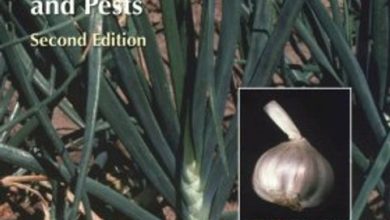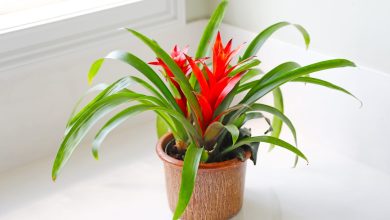How to plant porongo or gourd


Lagenaria siceraria
Porongo is also well known as gourd, and this often causes confusion, as this popular name is also used for another very different plant, the tree species Crescentia cujete , also called cuia tree.
The porongo or gourd is a vigorous vine, whose branches can grow from 3 to 10 m in length. There are a wide variety of shapes and sizes of fruits in this species, which is one of the oldest plants cultivated by mankind, having been cultivated for at least eight thousand years. It is also one of the few herbaceous plants that was grown in both the old and new worlds before European sea voyages to America. Its long history of cultivation makes it difficult to determine its origin, but recent research indicates that it may be a plant originating in southern Africa.
The fruits, which can vary from small and rounded to large and long, ranging from ten centimeters to more than one meter in length, are used for making containers (for example, the chimarrão gourd in southern Brazil and in other countries in the south of South America), musical instruments (for example, the Indian sitar), and for making handicrafts (for example, the blunt mates of turkey).
Both immature fruits and seeds, young leaves and the tips of branches can be consumed. The immature fruits of some cultivated varieties are more suitable for consumption than the fruits of others, which are more suitable for other uses when dried, and some varieties grown in Asia are considered to be of the best quality for consumption. Young leaves and branch tips can be eaten cooked or sautéed. Immature fruits can be prepared in many different ways, such as fried or cooked, and can be used in soups and preserves, or even to make juice. However, unusually bitter fruits must be discarded, being unfit for consumption, especially in the form of juice, as they may have a high concentration of cucurbitacins, which are toxic substances.
The flowers of this species are white, with male and female flowers separated on the same plant. Female flowers already contain a small fruit at the base of the flower (actually the ovary of the flower, which will develop into the fruit after pollination). Male flowers have only one long, thin stem (the floral stalk, which in female flowers is shorter). The flowers open at dusk and can remain open for several hours during the next day. Flowers are mainly pollinated by moths during the night, but can also be pollinated by bees, beetles and bumblebees or bumblebees in the morning.

Climate
It is grown in virtually all regions of tropical and subtropical climate in the world, and can be grown in any region free of frost and very low temperatures, although it grows best at temperatures between 18 and 30 ° C. In colder regions, it can be grown during the hottest months of the year, and in greenhouses, if necessary.
Brightness
It needs direct sunlight.

Ground
The soil should be well drained, and ideally, it should be light, fertile and rich in organic matter. This plant is tolerant of soil pH, but the ideal is a pH between 6 and 7.
Irrigation
Irrigate in order to keep the soil always moist, but avoiding that it remains soaked.

Planting
The gourd or porongo is propagated from its seeds. Open pits 30 to 45 cm deep, fertilize as needed, in order to supply the nutritional deficiencies of the soil, and close again. Sow two to five seeds per hole at a depth of 1 to 2 cm in the prepared soil. It is also possible to sow seedlings, bags for seedlings or small pots, and transplant the seedlings when they reach 15 to 20 cm in height. Under suitable conditions, germination can occur in less than a week.
The recommended spacing between the plants varies greatly with the cultivated variety and with the method and conditions of cultivation, ranging from 2 to 4 m between the cultivation lines and from 1 to 3 m between the plants, being smaller for the cultivated crop. and higher for undergrowth.

Cultivation
This plant can be grown without staking, with branches growing on the ground, but the ideal is to grow it so that it can grow on fences, trellises or arbor, to increase productivity by area and so that the fruits are not in contact with the soil.
Carefully remove invading herbs that are competing for resources and nutrients, as the roots of this plant are relatively shallow.
If there are no insects to do the pollination, it can be done manually, picking male flowers and touching them lightly on the female flowers, so that the anthers covered in pollen come into contact with the stigma of the female flower. It is also possible to use, for example, a soft bristle brush to transfer pollen from male flowers to female flowers.

Harvest
The beginning of the harvest of fruits intended for consumption occurs from 60 to 120 days after planting. The fruits intended for consumption are harvested when well developed, but still immature, always leaving a few centimeters of the stem (peduncle) attached to the fruit so that they can be preserved for longer. The harvest must be done frequently so that the fruits do not pass the ideal point of harvest, and can be carried out, for example, every 3 or 4 days.
The fruits can take two or three months to ripen and dry. When the fruit ripens, the pulp dries and the skin hardens, becoming hollow. The totally dried fruits, which when shaken have loose seeds inside, can be cut or perforated, thus allowing the seeds to be removed, scraping the inside of the fruit to loosen them all. At this stage the gourds are ready to be used in making containers, musical instruments, etc.

![Photo of Cabbage Baris (Baris spp): [Characteristics, Detection, Effects and Treatment]](https://www.complete-gardening.com/wp-content/uploads/2022/08/cabbage-baris-baris-spp-characteristics-detection-effects-and-treatment-390x220.jpg)


![Photo of Sow Kale: [Substrate, Care, Irrigation, Pests and Diseases]](https://www.complete-gardening.com/wp-content/uploads/2021/06/kale_1596697041-390x220.jpg)